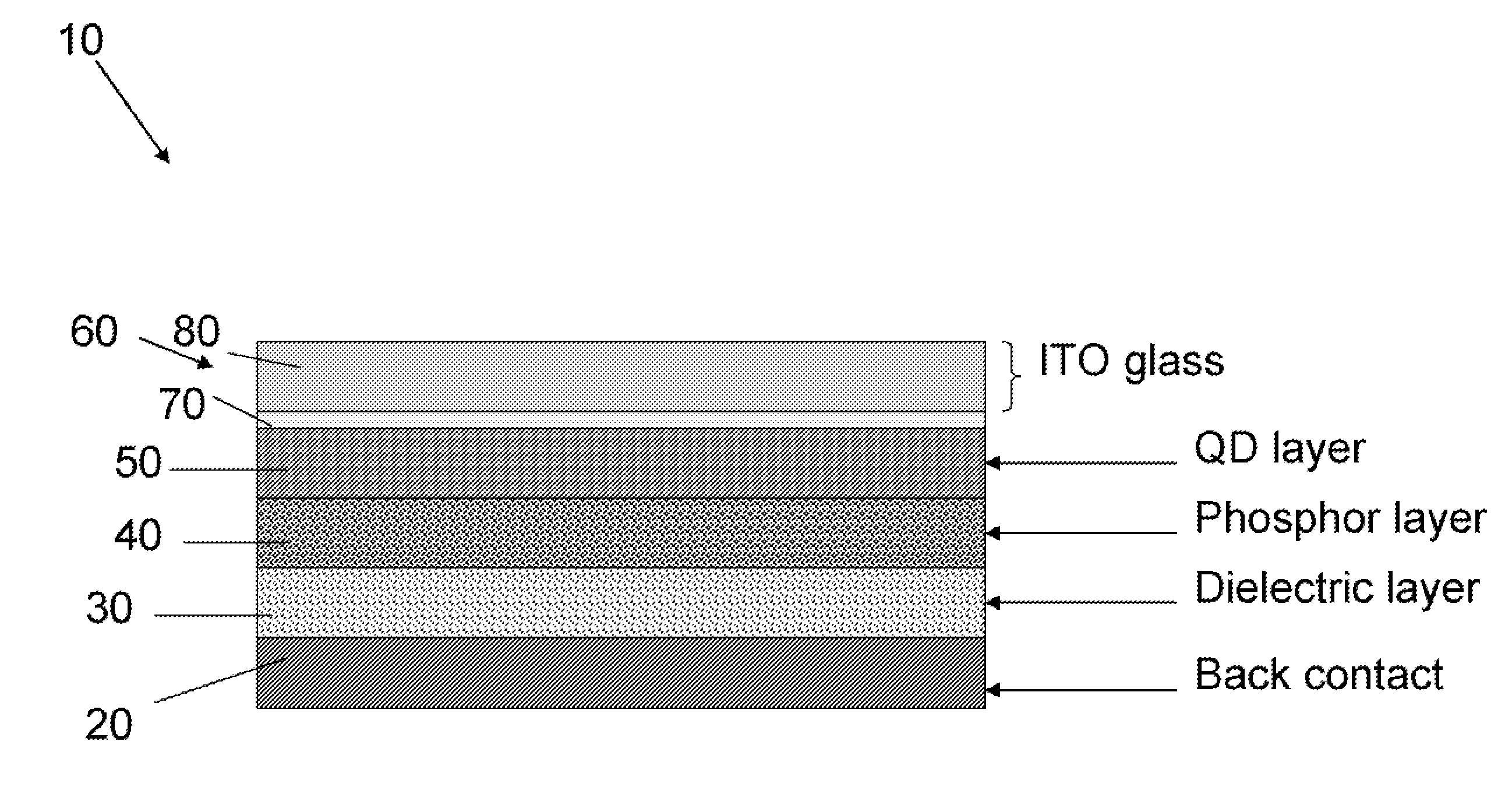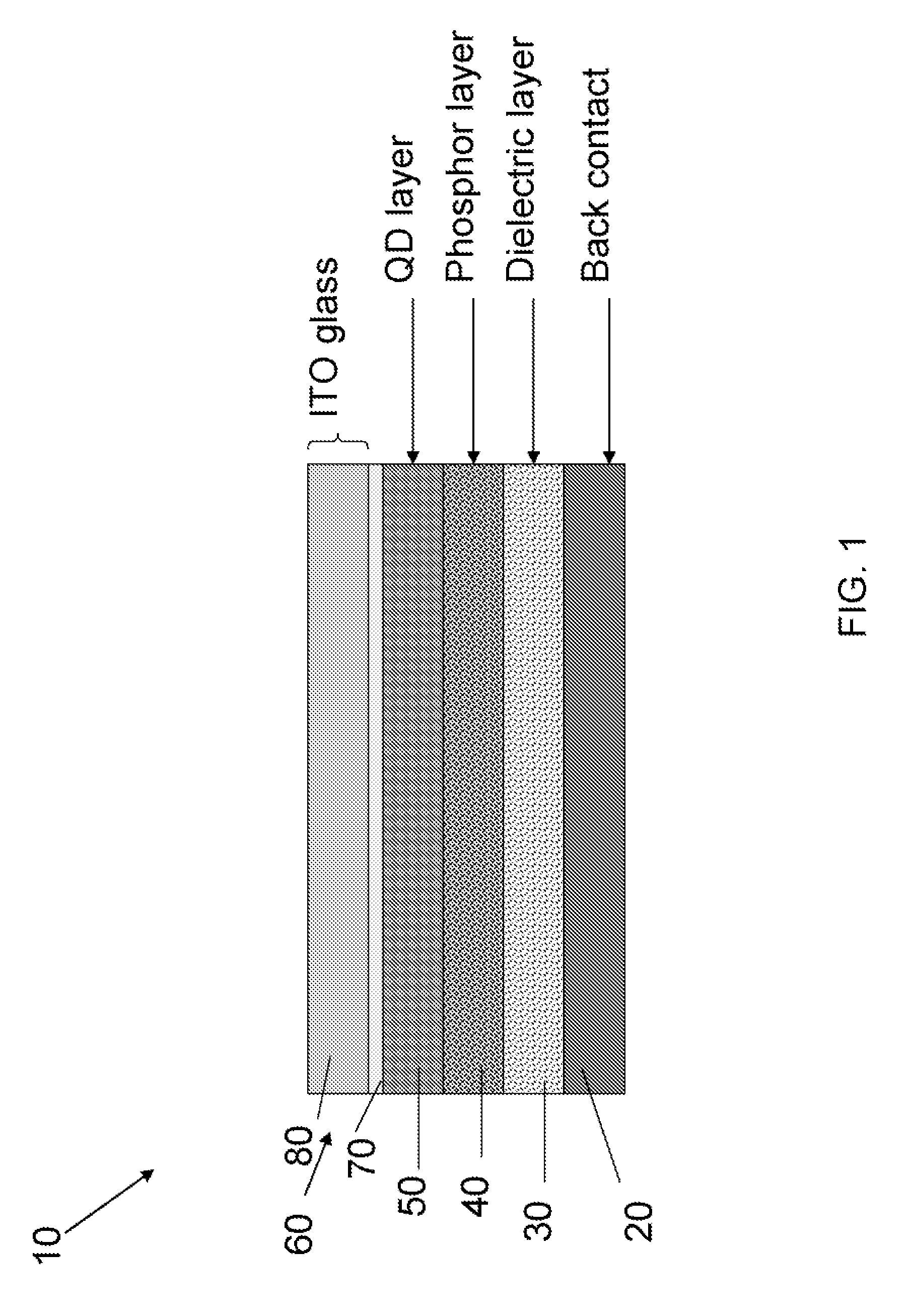Quantum dot electroluminescent device
a quantum dot and electroluminescent technology, applied in the manufacture of electric discharge tubes/lamps, luminescent coating applications, discharge tubes luminescnet screens, etc., can solve the problems of low efficiency, low efficiency, and low efficiency of phosphors, and achieve the effect of efficient operation
- Summary
- Abstract
- Description
- Claims
- Application Information
AI Technical Summary
Benefits of technology
Problems solved by technology
Method used
Image
Examples
example 1
[0023]First, a small piece of ITO glass is obtained, the ITO glass being about the same size as a microscope slide. A quantum dot dispersion in ECPVF is prepared by mixing 100 mg of 625 nm emitting CdSe / ZnS quantum dots (previously synthesized) per 1 mL of ECPVF. The resulting 100 mg / mL dispersion is blade-coated onto the ITO glass. Next, GG65 phosphor from OSRAM-Sylvania is mixed with ECPVF to a concentration of 100 mg / mL and blade-coated onto the quantum dot layer. BaTiO3 is combined with ECPVF to a concentration of 50 mg / mL and blade-coated onto the phosphor layer. A silver conductive paste is then blade coated onto a piece of glass, which is pressed onto the BaTiO3 layer with a wire connected. The wire from the back contact and a wire attached to the ITO glass are connected to a power source and results in a red-emitting EL panel.
PUM
 Login to View More
Login to View More Abstract
Description
Claims
Application Information
 Login to View More
Login to View More - R&D
- Intellectual Property
- Life Sciences
- Materials
- Tech Scout
- Unparalleled Data Quality
- Higher Quality Content
- 60% Fewer Hallucinations
Browse by: Latest US Patents, China's latest patents, Technical Efficacy Thesaurus, Application Domain, Technology Topic, Popular Technical Reports.
© 2025 PatSnap. All rights reserved.Legal|Privacy policy|Modern Slavery Act Transparency Statement|Sitemap|About US| Contact US: help@patsnap.com


